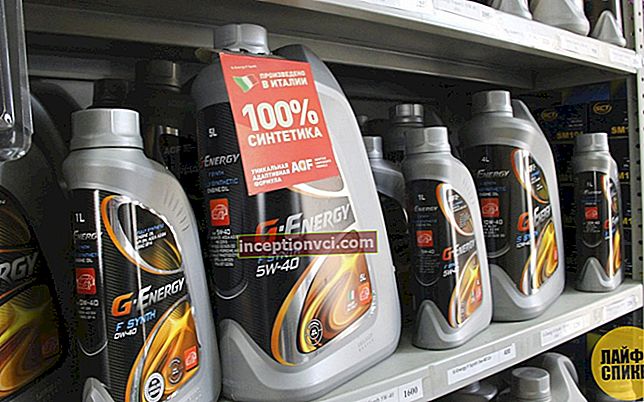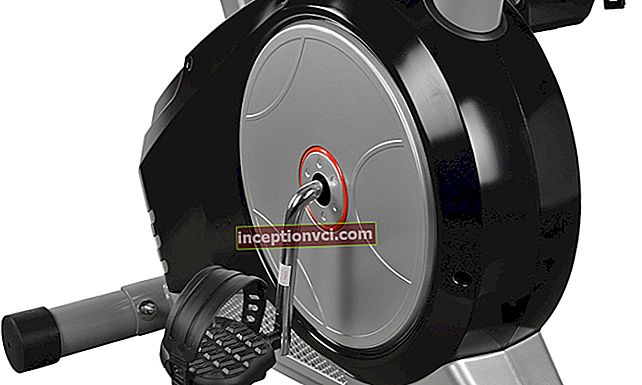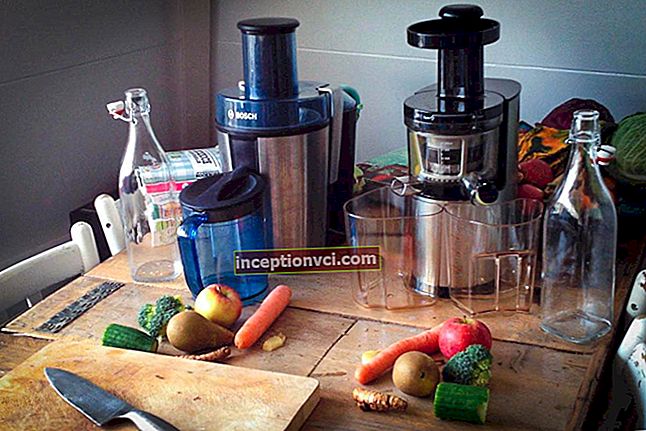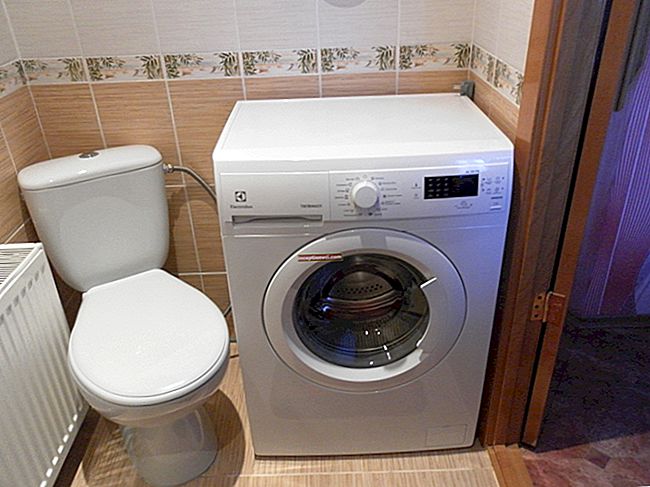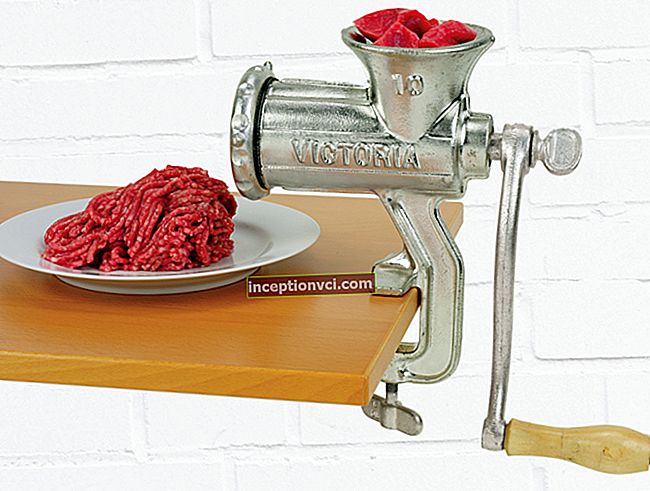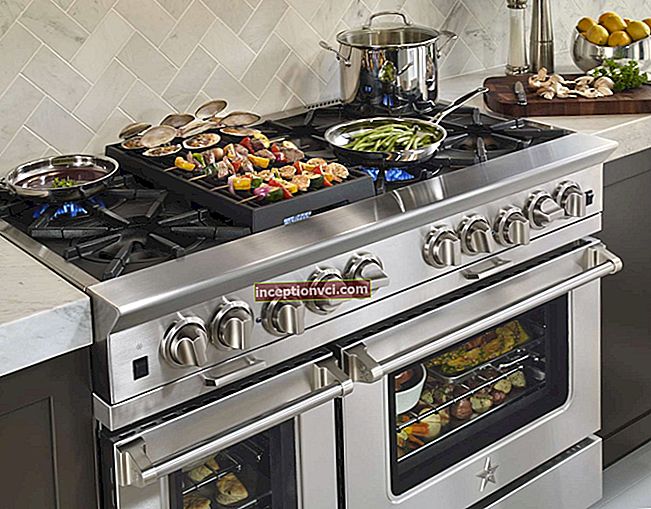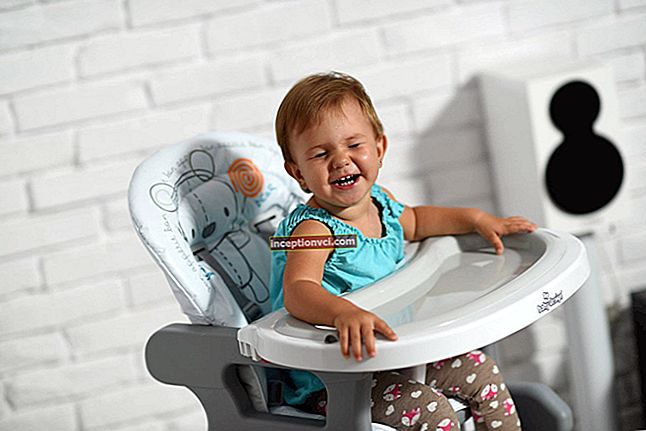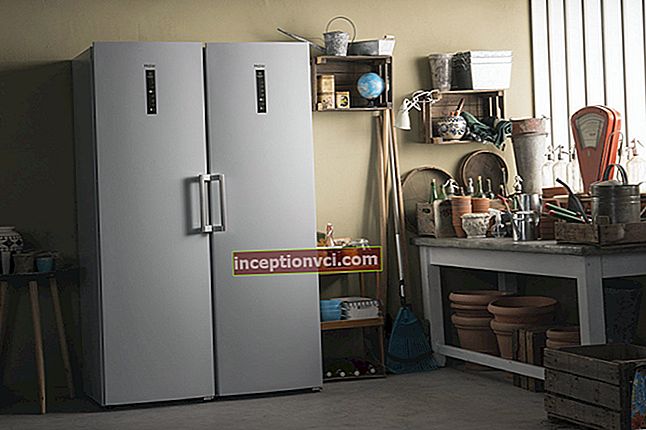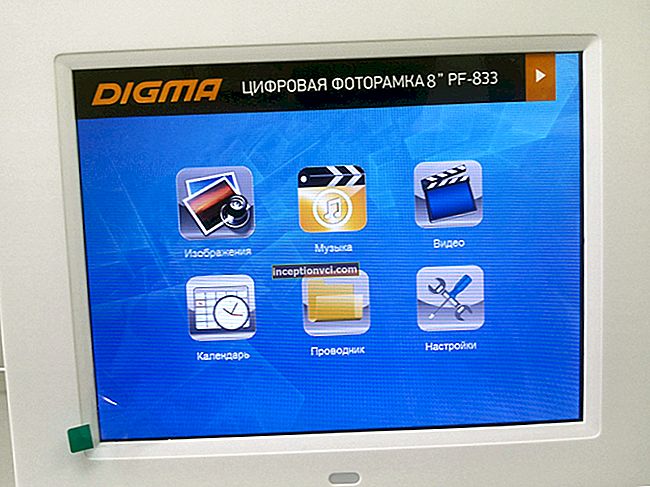After the success of the model 5800, Nokia decided to release a phone with fewer features and at a lower price. This is how it appeared 5230.
Display
There are no differences from the 5800 model. Exactly the same, full touch resistive display with resolution 640x360 px., diagonal 3.2 inch and the ability to display 16 million colors... The aspect ratio is 16: 9. You can work with it both with your fingers and with a stylus. This option is definitely more convenient. In winter, you do not need to take off your gloves to, for example, dial SMS. To work with small text, and sometimes with a qwerty keyboard, it is more convenient to use a stylus.
The screen is protected by plastic and is slightly recessed into the body. This prevents scratches when the phone is placed face down on a flat surface. Sometimes it can save you from being damaged by a fall.
The built-in rotation sensor works quickly and correctly. The orientation of the display changes depending on the position of the phone while any application is running. Of course, if you don't need this feature, you can turn it off in the settings. This will save some battery power. There is also a proximity sensor. It locks the screen if you bring your phone to your face. Firstly, it avoids accidental clicks, and secondly, it saves energy.
It is very convenient to view photos, videos and read books on such a display. The picture is bright and rich. Even when viewing 5 megapixel photos, no braking occurs. The screen behaves well in the sun, no discomfort is felt.
In active standby mode, the display shows a lot of useful information - shortcuts to the most necessary programs, reminders, contacts, notifications about unread messages, time, date, etc.

Software platform
The smartphone has Symbian OS version 9.4... After misunderstandings with the 5800, Nokia tried to fix bugs and firmware in Nokia 5230 quite stable and correct. If necessary, you can officially update the software using a computer and "over the air" via the cellular network using the function FOTA... Many Nokia smartphones have this opportunity.
Housing, dimensions, controls
Dimensions (edit) Nokia 5230111x51,7x15,5mm, weight 115 g... The body is made of plastic, assembled with high quality. There are no backlashes or creaks, at least at the beginning. There are also no cracks where dust likes to cram. The body design is almost the same as in the 5800. The only differences are that there is no flash for the camera and a hole for storing the stylus. There are several color options - black, white, red, pink, blue and green. The set includes a replaceable socket (battery cover) and a "pick". As in the case of the 5800, it can replace the stylus.
The phone keypad is touch-sensitive. When the display is oriented vertically, the keyboard looks like a normal alphanumeric keyboard. The keys are large in size, it is rather difficult to confuse them. If the display is oriented horizontally, you can use the qwerty keyboard. The keys are smaller in size, but you can press them with your finger and stylus. The phone vibrates when you press the keys. If it is not necessary for you, you can turn it off, this will save a little battery power. As well as in 5800 there is a possibility of handwriting input. The function is useful, but at the beginning you need to get used to how to write text correctly with the stylus so that the smartphone displays the characters correctly.
In addition to the touch keypad, under the display there are three buttons for accepting a call, a menu and a call reset. On the right side Nokia 5230 there are - a button for turning on the camera, a switch for locking the screen and keyboard, and a double key for adjusting the volume. There are only two slots on the left side of the phone - for microSD and SIM card... If it is convenient to remove and install a memory card, then you will have to tinker with the SIM-card, as in the 5800. Both slots are closed with caps, which prevents dust or dirt from getting inside the phone. There is also a speaker hole on the left side. IN Nokia 5230 he is alone.Suitable for calls and speakerphone perfectly, but rather weak for music. There are three connectors on the top of the smartphone - 3.5mm for connecting headphones, 2 mm (like most Nokia phones) for charging and microUSB port for connecting to a computer (also with a plastic cap).
Operating frequency range, data transmission
Nokia 5230 operates in the following ranges: GSM / EDGE 850/900/1800/1900, WCDMA 900/2100 and 850/1900... As with most Nokia phones and smartphones, there is an option to enable offline mode.
Data transfer is possible using CSD, HSCSD, GPRS / EGPRS, EDGE, HSDPA,Bluetooth 2.0 (A2DP, EDR), USB 2.0... There is no Wi-Fi in this model. On the one hand, this is a drawback, but on the other hand, not everyone uses this function. Not all cities have establishments with free internet access, and not many use Wi-Fi routers at home.
When connected via USB to a computer, the phone does not charge. This is not to say that this is an important drawback, but it would be more convenient. It is possible to connect in four modes: through Nokia PC Suite (if it is installed on the computer), in the mode of transferring photos or audio-video files, and just like a regular USB flash drive (both the memory card and the internal memory of the phone are displayed on the computer).

Battery
IN Nokia 5230 uses exactly the same battery as in 5800 BL-5J 1320 mAh... This is not the most capacious Nokia battery, but it lasts for 7 hours of talk time, 438 hours of standby time, 33 hours of listening to music, 4.6 hours of video playback (not maximum quality), 3 hours of video recording, and 4 hours of GPS navigation or working on the Internet. A full charge lasts, as usual, one and a half to two hours.
Memory, processor
RAM in Nokia 5230 128 MB (after booting the system remains free until 75 MB), internal dynamic memory 256 MB (user available about70Mb). The phone supports memory cards microSD before 16 GB... Comes with a memory card for 4 GB... There is a high probability of support microSD 32 GB, but they are not on sale yet. There is a possibility of "hot swapping" of memory cards.
The Nokia 5230 has a processor with a frequency 434 MHz, there are no differences from 5800 and 5530. It is quite enough for correct and quick work with all pre-installed applications, listening to music, taking photos and videos.

Gps
Nokia 5230 has a built-in Gps receiver. It works like most other Nokia smartphones with stable firmware, fast and correct. There are pre-installed maps Ovi Maps3.0... They have better detail, compared to previous versions, the speed of work is higher. If, for some reason, they do not suit you, you can install third-party maps adapted for the touch screen.
Music player
Sound quality Nokia 5230 quite comparable with the 5800, 5530. The volume, as it seems to me, is somewhat lower than that of the 5800. But a lot depends on the headphones. Those that come with the phone are only suitable as a headset for conversations. For listening to music, it is better to use higher quality ones. You can also connect 32 Ohm headphones, but the volume in them will be slightly lower than at 16 Ohms. But the quality is higher.
The player's interface has not changed at all in comparison with the 5800, 5530. It can play a standard set of audio formats (MP3, MP4, AAC, eAAC +, WMA etc.), which exceeds the capabilities of many mp3 players. The sound can be changed using an eight-band equalizer. There are 6 preset options that you can modify or create your own. There is a possibility of amplifying low frequencies, expanding the stereo base. In general, the player's capabilities are wide, and the controls are quite convenient. Many mp3 players could only envy. Yes, and expand opportunities Nokia 5230 it is possible by installing additional programs for audio playback.
Also available FM radio... Its functionality is standard.

Photo and video
Camera in Nokia 5230 budget is set, total 2 MP (1600x1200 pixels)... There is no autofocus. Images are saved in JPEG format. The camera settings do not have anything original in comparison with the 5800 and 5530, but sometimes they are useful.There is exposure compensation (+2 ~ -2EV in 0.5 increments) and the ability to select ISO (low, medium, high). For those who don't like messing around with Photoshop, the phone comes with an image editor.
It is possible to shoot video with a resolution 0.3 MP (640x480) with a frequency of 30 frames per second. Video files are saved in mp4 and 3gp formats. Shooting modes - normal and night. It is also possible to mute the sound. The length of the video clip is limited only by the free space on the memory card. There is a video editing application. This also applies to audio recordings. The video looks good on a computer screen, but dynamic scenes are not very good, although this is a problem with most phones and smartphones.
Nokia 5230 plays video in resolution 640x480 and 320x240 with a frequency of 30 frames per second. The player "understands" formats mp4 and 3gp... It is also possible to view flash videos thanks to the preinstalled application Flash Lite 3.0... Additional applications can be installed to play videos in other formats.
miscellanea
The phone is pretty good. It does not have those problems at the hardware and software level that were typical of Nokia 5800. The functionality is quite sufficient for most users, and the low price makes it possible to purchase this device even for schoolchildren and students. The buyer can be advised to purchase a convenient case along with the phone in order to maximally protect the display from scratches and bumps.
